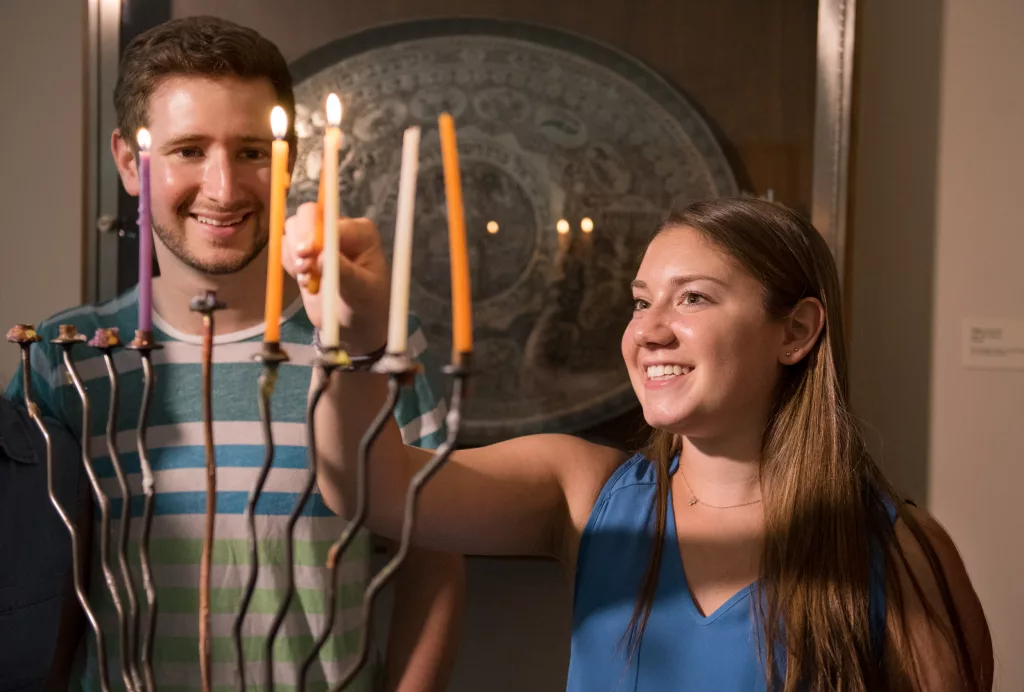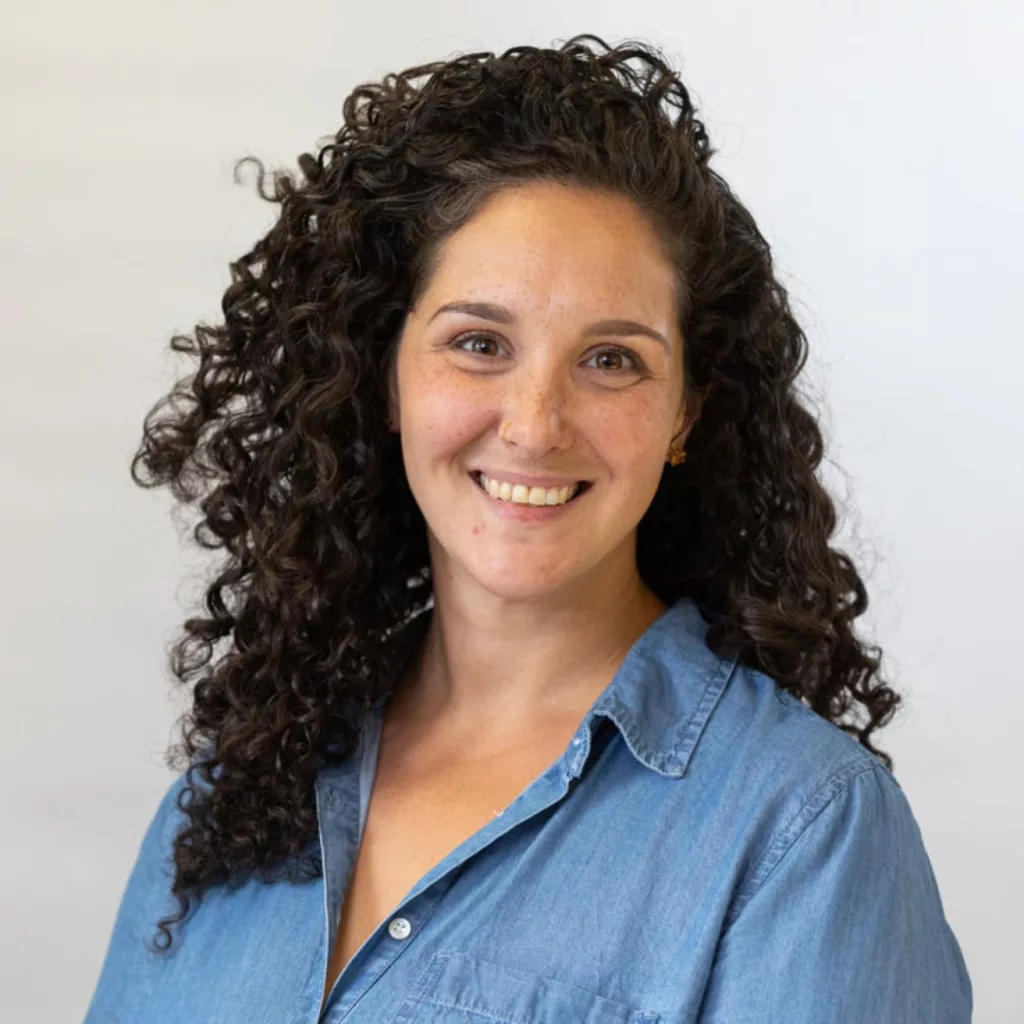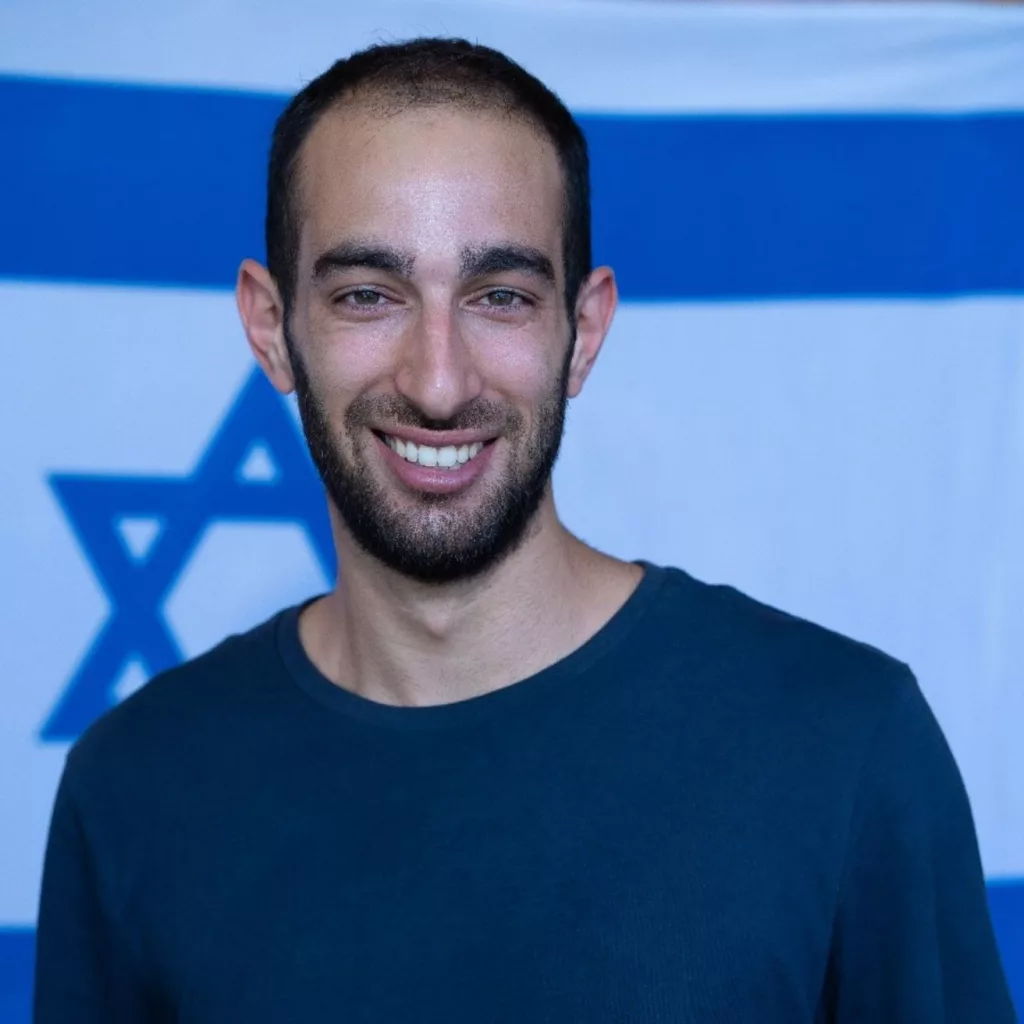Finding Light in the Darkness

There is a reason why so many cultures have light as a central element in winter holidays. In the dark, cold days of winter, focusing on light and joy can be even more important than in the warmer, light-filled days of spring and summer.
Similarly, moments of Jewish joy can inspire hope, in times that are dark both materially and existentially. Although not considered a major holiday religiously, Hanukkah has become an important ritual observance for so many reasons. One reason may be that, among its many historical messages and interpretations, the shining lights of the Hanukkah menorah call to everyone.
In the darkness of night, the ability to create light and enjoy it nourishes a deeply human impulse to create meaning and positive change. The opportunity to create a moment, where light and joy can come into existence, even in the face of darkness and struggle, is a beautiful inheritance from our ancestors.
In Hillel, so much of our work is centered on empowering young people and their communities to do exactly that: create Jewish meaning and positive acts of change in their own lives. Although many students have already left campus this year as Hanukkah begins, it is important to remember that this is just one of many opportunities for what we do across the movement every day: pause, bless, and make space to let ourselves create light for others.
In that spirit, we asked Hillel professionals to share with us what brings them joy and light in their celebration of Hanukkah this year. Here’s what they said:

The Light of Family
Steven Field,
IACT Coordinator, University of Pennsylvania Hillel
To me, the light of Hanukkah is important in dark times because it connects me to my family.
When I was a little kid, my family brought in Hanukkah the same way every year. After dinner, we lit the menorahs, one for each grandchild. Each shamash candle lit the shamash of the menorah next to it, each person spreading light and warmth to the person to our right. We would recite the blessings together and exchange gifts, with the light of Hanukkah shining in the background. To me, it felt simple and perfect.
Life now feels different. Family members are aging, the table is bigger with new faces from my step-dad’s family, and yet I also feel the absence of loved ones lost. My adult schedule means I spend less time with my family than I would like. Despite all of this, each year, we come together to share and revel in warmth and light. Lighting the candles with my loved ones reminds me that, no matter how the times change, my family will always be a place of warmth and connection for me.

What Is Jewish Joy?
Merav Fine Braun,
Executive Director, Hunter College Hillel
The chills I get when I hear Mizmor L’David.
Doron reminding me to give tzedakah (charity) before we say the blessing over Shabbat candles.
Did I mention Shabbat candles?
Kneading challah dough while on a conference call. Even if the conference call is about antisemitism.
Especially when the conference call is about antisemitism.
The conference call always ends up being about antisemitism.
What are we going to do about it?
Watch Eitan pat his head.
In his baby sign language that means, “Mama, can you get me a kippa please?”
Wrapping myself up in Jewish learning, reading, wisdom, movement … that’s my kind of hug.
A good hug starts with the breath, you know.
Your ribs expand, and your heart meets the heart of the person you are hugging.
Your breath and your heartbeats intermingle and become a single movement.
It’s like shuckling (swaying in prayer), but for your whole soul.
Did I mention shuckling?
It’s when your Jewish joy seeps out while you seek your truth.
You try to keep it in, but it becomes impossible.
It’s your body in motion, in rhythm with the divine.
It’s a dance. It’s a hug.
I mentioned hugs, didn’t I?
Learning text—Talmud, Torah, listening to students tell me why they stan the latest T. Swift album with the same zeal that I see them argue politics.
They love to paint nesting dolls, too. Do you?
And we all want to know: should it be kugel or plov?
I vote for neither.
Give me potato bourekas or give me death. No hyperbole in Jewish joy.
We always have food. Jewish joy is feeding a hungry belly and
A hungry soul and
Hunger.
What is Jewish joy?
It’s all the minutes between one Shabbat and the next Shabbat.
It’s measuring time until Cheshvan and then wishing for a holiday.
It’s hosting and being hosted.
It’s dancing and learning to dance.
It’s prayer, but you don’t need a book or a synagogue or a minyan.
Jewish joy is you.

Spread the Light
Amit Dadon,
Jewish Agency Israel Fellow, Ohio State University Hillel
Jewish communities often come together when bad things happen, especially when antisemitism is more prevalent than it has been in years. Our ability to do that is blessed, but it’s not the whole picture. It is so important that we also be able to gather our community around brightness and light.
It can be hard to remember the light and the joy through the stresses of everyday life and the hectic schedule of a college or university term. But what keeps us moving forward is the wonder and joy our students encounter when they learn something new in a Jewish text or they connect with an aspect of Israeli culture that is exciting and meaningful to them.
Our ability to create a joyful atmosphere for our students is the foundation of a healthy and strong community. We hope this foundation will inspire our students to unite with us around the positive side of life and that together we will create a thriving community that will be able to spread the light around us.
The thing about light is that it gives back to us as we give it to others. When students support their friends, the light they spark reflects back upon themselves and upon the Jewish community. That light will always continue to spark, as long as we help to ignite it.